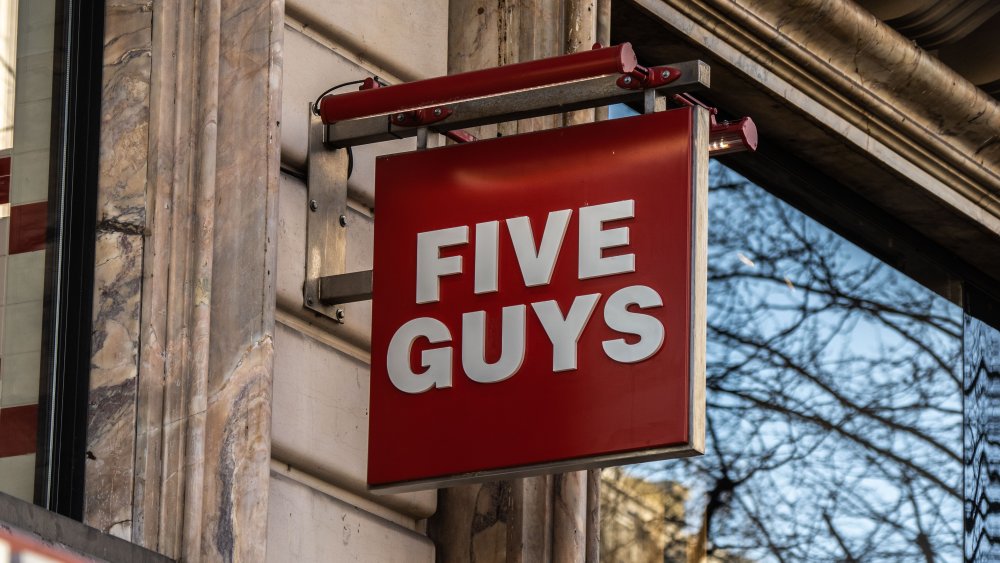The Real Difference Between Five Guys And Shake Shack Burgers
The country's best known burger chains go back to the 1950s. According to Encyclopedia Britannica, Burger King came onto the scene in 1954. McDonald's followed a year later in 1955. Two other successful burger joints have come onto the scene in recent years and spread like wildfire across the country. The first Five Guys was opened in 1986 in Virginia, and Shake Shack was started in a truck in New York City's Madison Square Park in 2003 (via Pentagram). While at first glance, there are some similarities on with the menus, there are some aspects which set the burgers at the two chains apart from each other as well.
While Five Guys allows for the diner to pick from a list of burger toppings including mayo, lettuce, pickles, grilled mushrooms, jalepeño peppers, relish, and more for free, Shake Shack has pre-selected burger formulas with names and already determined toppings. Take for example, the Smoke Shack, which is topped with bacon, cherry peppers, and ShackSauce. You could conceivably create a similar type of burger with some of the toppings available at Five Guys, but at Shake Shack, it's already been arranged and created for you.
Differences in burger ingredients
When it comes to where the burger meat comes from, Shake Shack uses 100 percent all-natural Angus beef (via Shake Shack). They make clear that they don't use any beef treated with hormones or antibiotics.
Five Guys, on the other hand, says that they "only use fresh ground beef" but don't go into any detail about how the beef may or may not have been treated. At the same time, Five Guys makes clear on their website that "there are no freezers in Five Guys locations," meaning that the patty on your burgers has never been frozen.
One last thing that sets Shake Shack burgers apart from those of Five Guys is the fact that they use a potato bun (which they note is not genetically modified). Five Guys, on the other hand, uses a regular wheat flour bun, which is just a bit eggier than some of its fast-food counterparts, and leaves out the chemicals and dough conditioners (via The Daily Meal).

